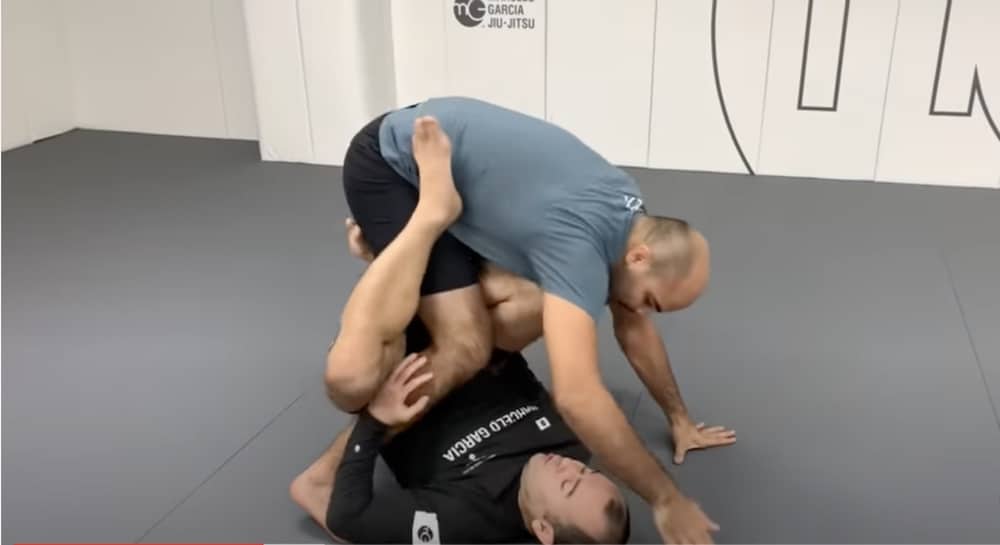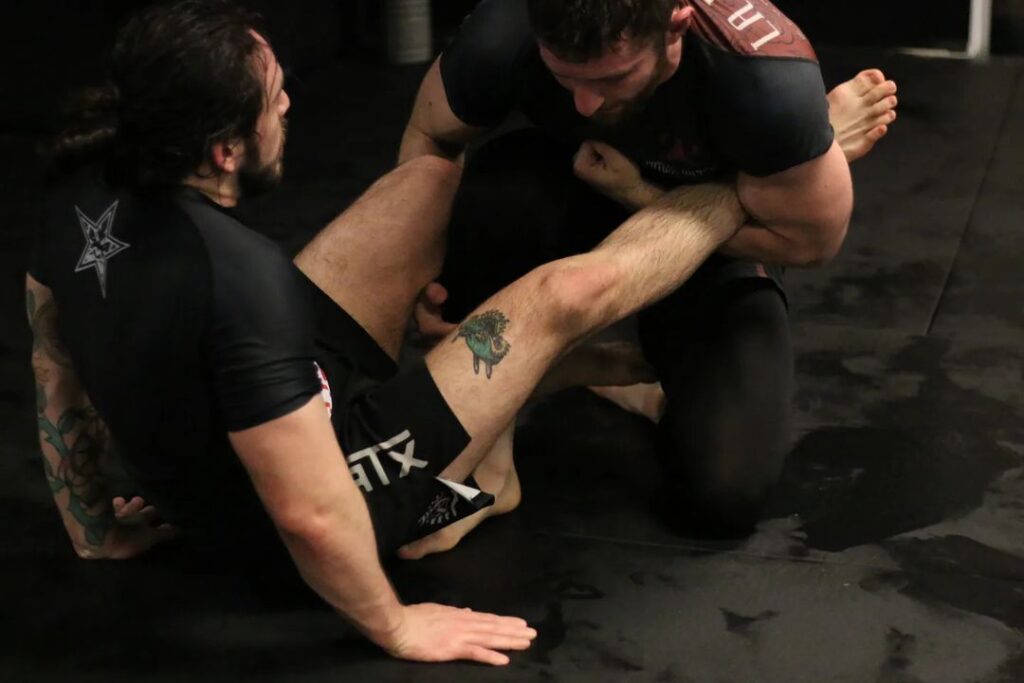Butterfly Guard – BJJ Technique Explained

No matter if it is Gi or No-Gi, the butterfly guard is one of the most used guards by BJJ grapplers. It offers a wide variety of sweeps and submissions.
Perfect for smaller grapplers that are going against bigger grapplers or for any type of grappler really. As Jiu Jitsu continues to evolve, many still prefer to use the butterfly guard. The techniques are simple, effective, and work on anyone.
Here is everything you need to know about the butterfly guard. Everything from how it works. Who came up with it, and various techniques listed below.

Who came up with the butterfly guard?
The butterfly guard has been around in grappling for numerous years. Used as a for someone fighting off their to either sweep or make space and get up.
Judo used it before Jiu Jitsu was created, but BJJ was the martial art that innovated the guard. In Brazil, they refer to the guard as “guarda de gancho” or hook guard in English.
It started getting popular in academies during the 80s.Top BJJ athletes like Sergio Bolão and also Cássio Cardoso were two of the top innovators of the guard during this time. Bolão particularly began innovating the classic balloon sweep using a bicep control along with hooking his leg against his opponent’s leg.
Later on in the 90s when the CBJJ was established in Brazil was when the butterfly guard was really innovated. Master Jean Jaques Machado was one of the most popular users on the guard along with Renzo Gracie.
During the 2000s, the grappler that really showed the possibilities of butterfly guard multiple time champion Marcelo Garcia. He amazed spectators fighting in open weight classes and dominating larger opponents with his butterfly guard.
Through the decades, the butterfly guard has proven to be one of the most effective techniques in Jiu Jitsu.
How does the butterfly guard work?
The butterfly guard works like a lever on your opponent. You use your legs as hooks on your opponent’s legs, while staying close and clenching them.
By sitting and framing with your legs hooked into your opponent gives you a strong base. Making it hard for your opponent to push you to your back and begin passing.
From this position, you can sweep your opponent in every direction depending on their reaction and defense. There are also numerous submission opportunities or even taking your opponent’s back to choke them.
It is a highly functional guard and the reason why many grapplers choose to use it.
Over/Under butterfly sweep
The butterfly guard sweep where you have an underhook and overhook is a classic sweep from this position. You’re in tight on your opponent with an underhook and overhook staying low on your opponent with your head down.
In Gi Jiu Jitsu, you grab your opponent’s belt with your underhook and hold at the elbow with the overhook. The arm you have an overhook on is the side you’re going to sweep your opponent on.
Start the sweep by scooting into your opponent and fall to your side at an angle. As you’re falling to your side, pull your opponent’s arm in to prevent them from defending the sweep by basing.
Then at the same time you’re falling, you use your hook to kick your opponent to complete the sweep.
Shoulder clamp sweep
Clamping your opponent’s shoulder while playing butterfly guard provides great control. Doing this gives you two sweep options depending on what your opponent does.
Your first option is if they don’t press forward and defend by sitting back. Get an underhook, connect your hands together, and clamp down on their shoulder to control your opponent’s arm.
When they’re sitting back, take your foot and kick out your opponent’s base. At the same time using your other hook to take them over to complete the sweep.
When you have the shoulder clamp, your opponent might always press forward. All you have to do is use their momentum against them.
They come forward and you immediately turn on your side using your hook and shoulder clamp to take them over.
Crossing the arm sweep
A world champion grappler named Adam Wardzinski is famous for using this technique. It has two different sweep options depending on your opponent’s reaction.
The technique starts from sitting guard, where you cross grab your opponent’s sleeve and grab at their armpit. Using these grips to pull yourself into butterfly guard with one foot on your opponent’s hip.
If your opponent postures up, you are going to let go of the armpit grip and grab their belt. You then take your foot off your opponent’s hip and shoot it between their legs on the mat.
Bringing you under your opponent and underhooking their leg. With your other leg hooked all you need to do is turn your hips to complete the sweep.
Your other option is a back take if your opponent does not posture. Using your sleeve and armpit grips to pull your opponent forward and go right to their back.
Butterfly back take
A back take option off a butterfly sweep presents itself when your opponent defends by basing out with their hands. When they base out, you slide your hook down their leg on their foot. Your other hook comes off and you slide your foot towards your opponent’s foot.
As you do this, you take your underhook and grab hold of your opponent’s hip or lat muscle. Then to complete the sweep, base on your free hand and slide behind your opponent to take their back.
Reverse armbar
A common submission from the butterfly guard is the reverse armbar. This submission can open when your opponent tries to clinch your head or when they put their hand on the mat.
Keep your head attached to their shoulder as you kick them backwards and bring them forward. They will either put their head on the mat or try to grab your head.
When they do this, connect your hands together right above their elbow and take you hook out. Then bring your leg up and place your knee on your opponent’s shoulder to pin their arm.
To complete the technique press down on their shoulder with your connected hands to get the tap.
Darce choke
A darce choke from butterfly guard is a slick submission option. The opportunity can prevent itself when you attempt to arm drag your opponent or counter armdrag when they do a clinch.
If they do a clinch, you cross grab their wrist, turn your head, and pull their arm forward. When you do this their head comes forward exposing their neck.
To do the darce, pull their head down with one arm and shoot your arm through. Then grab your bicep, place your hand on their back, and fall to the side to finish the choke.
Tips for using the butterfly guard
The butterfly guard offers you numerous options, but there are key details you need to remember when using it. Here are some tips to remember when using this guard.
- Close the space: In order for the butterfly guard to work, you must be right on your opponent with no space given. Any open space will allow your opponent to pass your guard.
- Your Hooks: When hooking with your legs, they need to be slightly angled outward. Too far in or too far out are very easy for your opponent to pass.
- Shin Connection: Along with the angle of your hooks, you must also keep your shins connected to your opponent. You need to keep this connection in order to do techniques.
- Sit-up: A butterfly guard is when you’re sitting up against your opponent and not on your back. If you’re on your back, you don’t have a butterfly guard. Just an easily passable open guard.
- Arm Control: Before sweeping or submitting from butterfly guard you need to control your opponent’s arms. Either with frames, underhooks, overhooks, or a mix of these three options.
- Stay Low: Any technique you do from butterfly guard requires you stay under your opponent, so stay low and keep your head down.
- Feel Your Opponent’s Balance: How you use the butterfly guard will depend on how your opponent is holding their base. Feel where their weight is and use it against them.
- Kick Your Foot: To complete many of the sweeps from butterfly guard, you’ll need to kick your foot. The kicking motion gives you extra momentum to take your opponent over.
- Base Hand: When you have an underhook, you need to be ready to base with your other hand when your opponent pressures you. This will prevent you from getting put on your back.
- Angle Your Hips: No matter if you’re in Gi or No-Gi you must angle your hips in order to make this sweep work.






